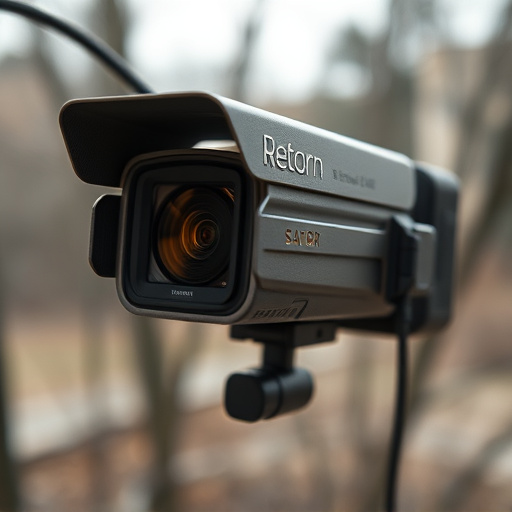In today's digital era, the Nanny Cam With Mobile Phone Alerts has revolutionized home and care setting security by allowing remote real-time monitoring via smartphone apps. Disguised as everyday objects like smoke detectors or decorative items, these advanced surveillance systems provide discrete yet powerful capabilities. Strategic placement ensures optimal coverage without compromising aesthetics, suitable for both residential and commercial settings. However, their use must balance security needs with stringent privacy laws, emphasizing ethical deployment and compliance to maintain trust.
Surveillance technology has evolved, with advanced equipment becoming increasingly subtle. This guide explores creative ways to employ nanny cams and mobile alerts for discreet monitoring while addressing legal and ethical boundaries. Learn about innovative camouflage techniques to hide surveillance devices, ensuring optimal coverage without compromising privacy. Discover how modern technology allows you to stay vigilant, offering peace of mind through strategic camera positioning and remote access via your mobile phone.
- Understanding Nanny Cams and Mobile Alerts: A Modern Surveillance Approach
- Camouflaging Surveillance Equipment: Creative Hiding Techniques
- Advanced Cam Positioning Strategies for Optimal Coverage
- Legal Considerations and Ethical Use of Hidden Cameras
Understanding Nanny Cams and Mobile Alerts: A Modern Surveillance Approach
In today’s digital era, the advancement in surveillance technology has led to innovative solutions like the Nanny Cam with mobile phone alerts. This modern approach to monitoring offers homeowners and caregivers a remote, real-time glimpse into their homes or care settings. By integrating a camera with a smartphone app, users can receive instant notifications and access live video feeds from anywhere, ensuring peace of mind while maintaining privacy.
Nanny Cams equipped with mobile phone alerts provide a discrete yet powerful surveillance system. These devices are designed to blend seamlessly into their surroundings, often resembling everyday objects like smoke detectors or electrical outlets. When combined with remote access capabilities, they allow users to observe activities, receive activity alerts, and even talk through the device—all from the comfort of their smartphones. This advanced technique offers enhanced security while promoting a sense of trust in those entrusted with caring for children or vulnerable individuals.
Camouflaging Surveillance Equipment: Creative Hiding Techniques
In the realm of surveillance, creativity is key to staying undetected. Camouflaging equipment like nanny cams has evolved beyond traditional hiding spots. With advancements in technology, devices can now blend seamlessly into their surroundings, thanks to innovative design and smart features. For instance, a tiny camera disguised as a button or a decorative object allows for discreet observation while remaining virtually invisible.
One effective technique involves integrating surveillance with everyday items. A nanny cam equipped with mobile phone alerts, for example, can be disguised as a common household accessory like a potted plant or a wireless speaker. These creative hiding techniques ensure that the equipment remains functional and unobtrusive, making it easier to gather information without raising suspicion.
Advanced Cam Positioning Strategies for Optimal Coverage
In the realm of surveillance equipment, advanced positioning strategies are key to achieving optimal coverage and maximizing the effectiveness of a system. One innovative approach involves integrating a nanny cam with mobile phone alerts. By strategically placing this device in hidden locations, users can remotely monitor activities while maintaining discretion. The versatility of mobile alerts allows for instant notifications, ensuring immediate response to any events captured by the camera.
This technique leverages modern technology, such as compact and high-resolution cameras, to capture clear images from distant or hard-to-reach areas. Discreet positioning techniques include mounting cameras behind furniture, inside false light fixtures, or utilizing magnetic attachments for versatile placement. The goal is to create an extensive network of surveillance points without compromising aesthetics or disrupting regular activities, making it ideal for both residential and commercial settings, especially when coupled with the convenience of mobile phone alerts.
Legal Considerations and Ethical Use of Hidden Cameras
The use of hidden surveillance cameras, often referred to as “nanny cams” with mobile phone alerts, raises significant legal and ethical considerations. While these devices can provide valuable security and peace of mind for homeowners, employers, or caregivers, their installation and operation must adhere to strict privacy laws. In many jurisdictions, there are regulations regarding the placement and use of such cameras to protect individuals from unwarranted intrusion into their personal spaces. For instance, some areas mandate that cameras be clearly visible or disclosed to prevent hidden surveillance, ensuring transparency and consent.
The ethical dimensions involve respecting individual privacy rights and using these technologies responsibly. Hidden cameras should only be employed for legitimate purposes, such as monitoring sensitive areas like homes or daycares, with proper authorization from the relevant parties. Misuse of these devices can lead to severe legal repercussions and breach the trust between users, highlighting the importance of understanding local laws and maintaining ethical standards in surveillance practices.
The integration of nanny cams with mobile phone alerts has revolutionized personal surveillance, offering unprecedented convenience and peace of mind. By understanding the art of camouflaging equipment and employing advanced positioning strategies, users can ensure optimal coverage while adhering to legal boundaries. While these techniques provide enhanced security, it’s essential to approach their use ethically, respecting privacy and only deploying them in appropriate situations.
